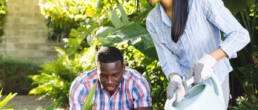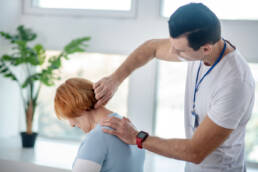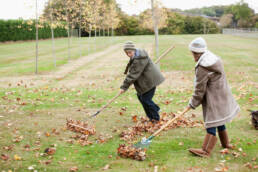Spring is finally here, and many people are heading outdoors to get started on their gardens. Gardening is a great hobby that allows you to enjoy the outdoors while growing nutritious foods for your family or beautiful flowers. All the digging, planting and weeding is also good exercise. All that use of your hands, wrists and arms could lead to some uncomfortable injuries, though.
Because gardening involves a lot of repetitive motions, people who enjoy this hobby are susceptible to overuse injuries. These injuries typically develop over time and may affect the hand, wrist or elbows. The pain is often ignored when minor, which sometimes causes mild injuries to develop into more serious problems. How can you avoid gardening injuries? Let’s take a closer look.
Common Types of Gardening Injuries 
While gardening is not a dangerous activity, those who enjoy the hobby are susceptible to a few common injuries, including:
- Gamekeeper’s Thumb – An injury to the ligament located on the inside of the thumb. It occurs as the result of chronic weakening due to repetitive stress on the area. Gardeners sometimes develop this injury from closing and opening hand tools.
- Wrist Tendinitis – Repeated movements of the wrist can result in chronic pain. Friction occurs when the tendons in the wrist rub together. This friction can cause swelling, irritation and inflammation. Gardeners commonly experience this either near the base of the thumb or further up the forearm.
- Elbow Epicondylitis – More commonly known as tennis elbow, this injury affects the muscles near the elbow joint. Repetitive wrist movements while gripping may cause this condition in gardeners.
Easy Ways to Avoid Injuries While Gardening
Just like you warm up before engaging in vigorous exercise, you should warm up before beginning a day of gardening. Take a few minutes to stretch your arms, wrists, hands and shoulders. Do some lower back stretches as well.
It’s also important to use the right tools. Look for ones with large rubber handles or ergonomic grips to reduce strain on your fingers. Choose lighter-weight tools whenever possible, and wear gloves to protect your hands. Maintain proper form when using tools, bending or lifting.
It’s easy to get caught up in the joy of gardening and have hours pass by in a flash. Non-stop work takes a serious toll on your body, though. Set an alarm to remind yourself to take brakes every half hour or so. Resting for just a few minutes takes some strain off your muscles and joints and can help prevent injuries.
Treatment for Gardening Injuries
In most cases, rest is the best treatment for mild gardening injuries. If, however, you have an injury that is exceptionally painful or does not seem to be going away on its own, you may need to seek medical treatment. For a free consultation, please contact Denver Physical Medicine.
Ready for an expert opinion? Get in touch today!
Discover how physical therapy can help manage scoliosis in mild to moderate cases, along with other ways it offers healthcare solutions. Learn more from Dr. Mansi Dua, DPT, C2 Schroth Certified.
Like this article? Spread the word!
Related Posts
December 15, 2024
Why Good Posture Matters for Denver Residents
Discover 10 simple daily habits to improve your posture and prevent back pain in Denver.…





